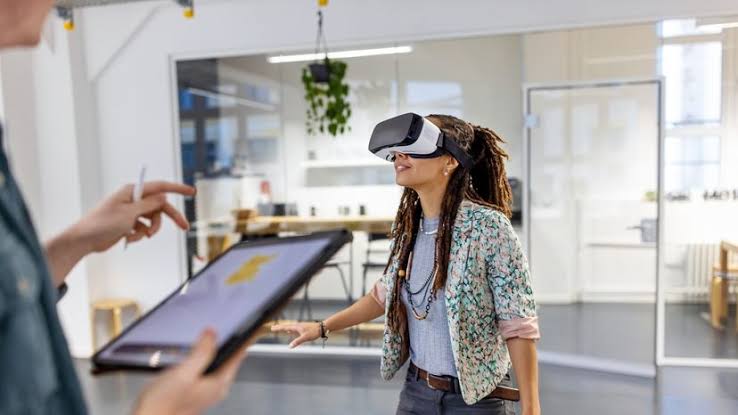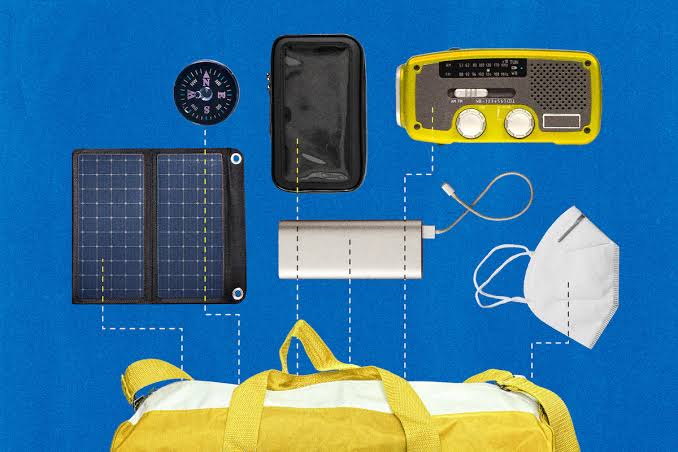Virtual Reality (VR) has come a long way since its early days of pixelated graphics and bulky headsets. As of July 2025, the VR landscape is evolving faster than ever, driven by advances in hardware, software, artificial intelligence, and user demand for immersive, realistic digital experiences. With tech giants investing heavily in the sector and startups pushing innovation, the next generation of VR headsets promises transformative applications far beyond gaming.
A New Era of Design and Comfort
One of the most noticeable trends in VR headset development is the move toward sleeker, lighter, and more ergonomic designs. Early VR headsets were often heavy, front-loaded, and uncomfortable for prolonged use. In 2025, new materials like graphene-infused composites, flexible OLED screens, and advanced strap designs have allowed headsets to become lighter and more wearable.
Companies like Apple, Meta, and Sony are focusing on mixed-material builds, passive cooling systems, and adaptive fitting technologies. Some newer models even feature customizable padding and auto-fit sensors that adjust based on the user’s head shape and facial features. This makes VR not only more comfortable but also more accessible to a wider audience—including children, the elderly, and individuals with physical limitations.
Advancements in Visual Fidelity
The future of VR depends heavily on how close virtual visuals can come to reality. In 2025, the race is on to achieve ultra-high resolution displays with minimal latency. Most high-end headsets now feature 4K-per-eye resolution, and prototypes are pushing toward 8K visual clarity.
Key developments include:
- Micro-OLED and Micro-LED displays: These deliver richer colors, higher contrast, and better energy efficiency than previous panels.
- Foveated rendering: A technique that tracks eye movement and only renders full detail where the user is looking, reducing the load on the processor and improving performance.
- Variable refresh rates: Offering smoother motion, which reduces motion sickness and improves realism.
These improvements make virtual worlds more convincing, immersive, and usable for longer periods—expanding VR’s role in work, education, and entertainment.
Expanding Beyond the Gaming Industry
While VR gaming continues to be a major driver of hardware sales, the real growth area lies in professional and creative applications. In 2025, industries such as architecture, automotive, healthcare, military, education, and real estate are adopting VR at a rapid pace.
Examples include:
- Medical training: Surgeons practice complex procedures in realistic virtual environments.
- Remote collaboration: Teams across the globe meet in virtual workspaces, replicating boardrooms and project studios.
- Virtual education: Schools and universities offer VR field trips and science simulations that replace static textbooks.
With companies developing purpose-specific VR applications and custom-tailored headsets for enterprise use, VR is moving firmly into mainstream business operations.
Eye and Hand Tracking: Toward Intuitive Control
One of the most exciting breakthroughs in VR headset development is in eye-tracking and hand-tracking capabilities. Rather than relying solely on handheld controllers, the latest VR systems track users’ gaze and gestures to allow seamless, intuitive interaction within virtual environments.
In 2025, eye-tracking is standard in premium headsets and allows for:
- Natural UI navigation (e.g., selecting menus by looking)
- Real-time user feedback for analytics and advertising
- Better focus rendering through foveated techniques
Meanwhile, hand-tracking and haptic feedback systems now offer more precise finger movement detection and tactile responses. You can “feel” the texture of a virtual object or experience force feedback when pulling virtual levers or handling digital tools.
Wireless and Standalone Capabilities
Gone are the days when users needed to be tethered to a high-end PC to enjoy quality VR. Today’s leading headsets are increasingly wireless, offering onboard processing power, internal storage, and integrated sensors. Devices like the Meta Quest 4 and Apple Vision Pro 2 can deliver desktop-level VR experiences without cables, making them more portable and user-friendly.
With the rise of 5G and Wi-Fi 6E/7, cloud-based VR is also becoming more viable. Users can stream high-quality experiences directly from cloud servers, reducing the need for large local storage and expensive GPUs. This opens the door for affordable headset models that rely on external processing.
Integration with Artificial Intelligence
Artificial intelligence is playing a growing role in VR headset development. From optimizing graphics rendering and predicting user behavior to personalizing environments in real time, AI is pushing the boundaries of what VR can do.
Key integrations include:
- Virtual assistants in VR: Offering hands-free guidance during virtual activities
- Behavioral modeling: Creating more lifelike NPCs (non-player characters) and avatars
- Dynamic content generation: Allowing AI to create custom virtual spaces based on user preference or past behavior
As AI continues to advance, it will make VR smarter, more responsive, and more attuned to individual users’ needs and goals.
Bridging the Gap with Augmented and Mixed Reality
VR headset development is also increasingly intersecting with AR (Augmented Reality) and MR (Mixed Reality). Headsets like Apple’s Vision Pro and the Meta Quest Pro now include passthrough capabilities, allowing users to see the real world while interacting with virtual objects overlaid on it.
This fusion enables mixed-reality experiences such as:
- Placing virtual furniture in your actual room before buying it
- Attending mixed-reality concerts or sporting events
- Collaborating with holographic coworkers in your real office
These hybrid systems blur the line between digital and physical, offering an exciting new frontier for headset innovation.
Accessibility, Affordability, and Global Reach
As the technology matures, manufacturers are also pushing to make VR more accessible. Open-source platforms, modular hardware components, and subscription-based VR services are lowering the entry barrier.
In emerging markets, especially across Africa, Southeast Asia, and Latin America, compact and low-cost VR headsets are being distributed for education, remote training, and virtual tourism. Multilingual interfaces, solar-powered charging docks, and offline VR modules are helping bridge the digital divide.
What to Expect Next
By late 2025 and into 2026, we can expect the first commercial iterations of:
- Holographic VR headsets: Using light field technology to project true 3D visuals
- Brain-computer interfaces: Letting users control virtual environments with thought
- Tactile suits: Providing full-body haptic feedback for immersive simulations
These futuristic developments are no longer science fiction—they’re under development in labs and early-stage prototypes.
Conclusion
The future of virtual reality headsets is rich with potential. From enhanced visual fidelity and ergonomic design to AI integration and mixed-reality convergence, VR is poised to become a cornerstone of how we learn, work, and connect. As technology becomes more refined and affordable, virtual reality won’t just be a tool for tech enthusiasts or gamers—it will be an everyday gateway to new experiences across all aspects of life.
By investing in innovation and inclusivity, the next wave of VR headset development will redefine not just how we see the world, but how we live in it.



